Posts Tagged "Data-Driven Marketing"
Articles
- Best Marketing Conference Sponsorship
- What Does it Mean to Be an Exhibitor at a Conference?
- What Is the Biggest Social Media Conference?
- What Is an Innovation Conference?
- What Is a Typical B2B Event?
- What Are the Cloud Technology Events in 2025?
- Marketing Event Volunteer Opportunities: A Comprehensive Guide
- Digital Marketing Event Volunteer Opportunities Near Me
- What Does a Volunteer Do at a Conference?
- Is DigiMarCon Worth It?
- Is DigiMarCon Good?
- What is the Biggest Marketing Forum?
- What are Digital Marketing Conferences?
- Marketing Conference Exhibiting: Your Guide to Success
- Digital Summit Comparison: A Closer Look at DigiMarCon
- Digital Marketing Conference
- Digital Marketing Events: Your Guide to Success in 2025
- Marketing Conferences: Unlocking Your Business Potential in 2025
- What Is The Future of Digital Marketing in 2030?
- B2B Event Marketing Strategy: Unlocking Success For Your Business
- Why B2B Event Marketing?
- What Should a B2B Marketing Strategy Include?
- Top Marketing Conferences for 2025
- What Is the Future of Marketing in 2025?
Digital Marketing Conferences
- NORTH AMERICA
- DigiMarCon Cruise
(New Orleans, LA, USA) - DigiMarCon West
(Los Angeles, CA, USA) - DigiMarCon Northwest
(Seattle, WA, USA) - DigiMarCon Canada West
(Vancouver, BC, USA) - DigiMarCon Canada
(Toronto, ON, Canada) - DigiMarCon Canada East
(Montreal, QC, Canada) - DigiMarCon Florida
(Orlando, FL, USA) - DigiMarCon Gulf Coast
(Houston, TX, USA) - DigiMarCon Southern California
(San Diego, CA, USA) - DigiMarCon Midwest
(Chicago, IL, USA) - DigiMarCon Mid-South
(Nashville, TN, USA) - DigiMarCon Great Lakes
(Detroit, MI, USA) - DigiMarCon North
(Minneapolis, MN, USA) - DigiMarCon Central
(Kansas City, MO, USA) - DigiMarCon Texas
(Dallas, TX, USA) - DigiMarCon New England
(Boston, MA, USA) - DigiMarCon Mid-Atlantic
(Philadelphia, PA, USA) - DigiMarCon South Florida
(Miami, FL, USA) - DigiMarCon Southeast
(Atlanta, GA, USA) - DigiMarCon Central Florida
(Tampa, FL, USA) - DigiMarCon East
(New York, NY, USA) - DigiMarCon South Atlantic
(Charlotte, NC, USA) - DigiMarCon America
(Washington, D.C. USA) - DigiMarCon Northern California
(San Francisco, CA, USA) - DigiMarCon Rocky Mountains
(Denver, CO, USA) - DigiMarCon South
(San Antonio, TX, USA) - DigiMarCon Silicon Valley
(San Jose, CA, USA) - DigiMarCon Orange County
(Anaheim, CA, USA) - DigiMarCon Southwest
(Phoenix, AZ, USA) - DigiMarCon World
(Las Vegas, NV, USA)
- DigiMarCon Cruise
- LATIN AMERICA
- EUROPE
- MIDDLE EAST
- AFRICA
- ASIA PACIFIC
- DigiMarCon Hawaii & Pacific
(Honolulu, HI, USA) - DigiMarCon Asia & Japan
(Tokyo, Japan) - DigiMarCon New Zealand
(Auckland, New Zealand) - DigiMarCon Australia
(Sydney, Australia) - DigiMarCon Oceania
(Melbourne, Australia) - DigiMarCon Southeast Asia
(Singapore) - DigiMarCon India
(New Delhi, India) - DigiMarCon North Asia & China
(Shanghai, China)
- DigiMarCon Hawaii & Pacific
- VIRTUAL
Digital Marketing Blog
- What Makes DigiMarCon Stand Out (And Is It Worth It?) October 30, 2025
- Is DigiMarCon Worth Attending? A Complete Breakdown October 29, 2025
- DigiMarCon for Startups: Why Founders Shouldn’t Miss It October 29, 2025
- DigiMarCon Recap: What Went Down and What’s Next October 29, 2025
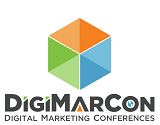


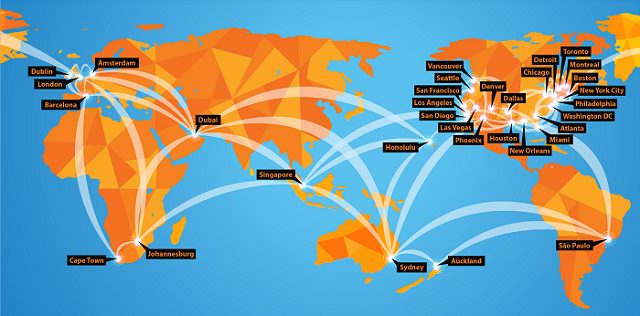


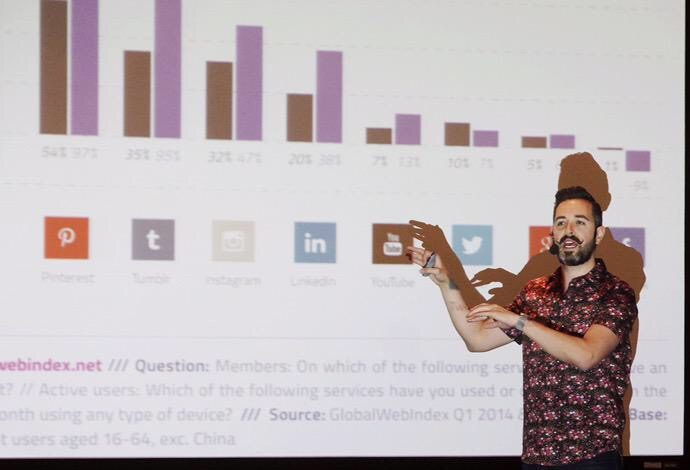




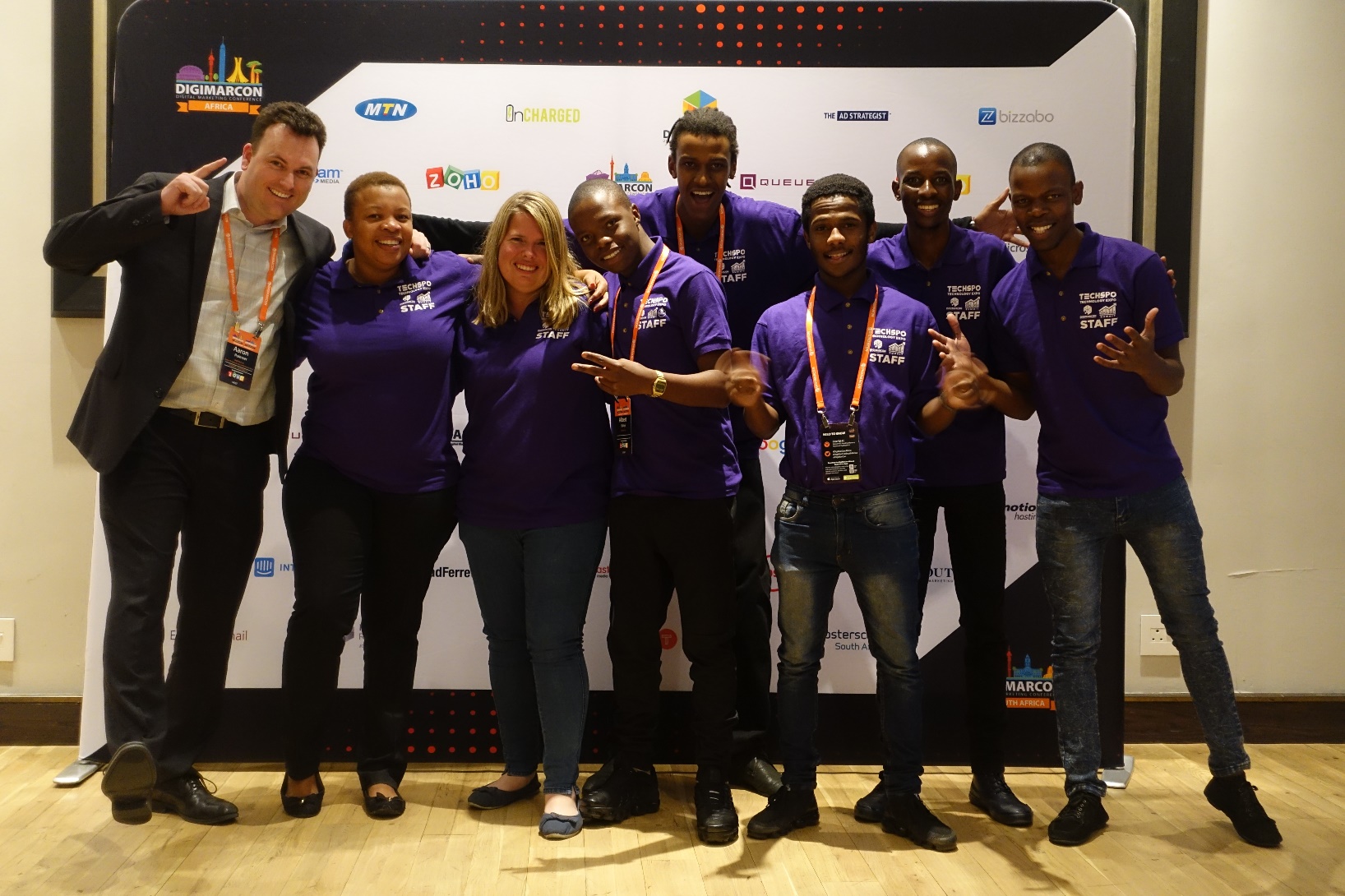





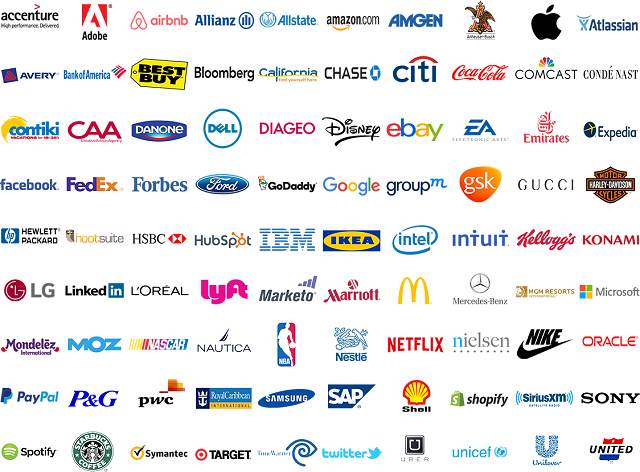















AI-Powered Marketing: Elevate Your Business
In today’s fast-paced digital world, businesses are always looking for new ways to stay ahead. Artificial intelligence marketing is a big change, helping companies improve their strategies and grow.
AI lets businesses understand their customers better, tailor their marketing, and make their campaigns more effective. This transformative technology changes how companies market, making it smarter, more efficient, and based on solid data.
So, companies using AI-Powered Marketing can reach their goals better and stay on top in the digital world.
The Evolution of Marketing in the Digital Age
Marketing has changed a lot over the years. It used to rely on print ads, billboards, and TV commercials. But now, thanks to technology and how people behave, machine learning in marketing and automated marketing strategies have changed everything.
The internet and social media have made marketing more targeted and measurable. Now, AI-powered marketing tools use big data to guess what customers want. They make marketing more personal and adjust campaigns as they go.
As marketing keeps evolving, using automated marketing strategies and machine learning is key. Businesses that get this can stay ahead in the digital world. They can use new chances to grow.
What is AI-Powered Marketing?
AI-Powered Marketing uses AI algorithms for marketing to change the game. It lets businesses dive into big data, automate tasks, and make customer experiences unique.
At its heart, AI-Powered Marketing relies on advanced marketing technologies. These include machine learning, natural language processing, and predictive analytics. Together, they help marketers make smart choices, improve campaigns, and connect better with customers.
One big plus of AI-Powered Marketing is its speed and accuracy in handling big data. This lets marketers understand what customers want and do better at reaching them.
Also, AI-Powered Marketing automates simple tasks. This means marketers can spend more time on big ideas. With AI-driven tools, businesses can work smarter, be more efficient, and get better results.
In short, AI-Powered Marketing is a big leap forward in marketing. It combines advanced marketing technologies and AI algorithms for marketing. As more businesses use it, they’ll likely see their marketing get a lot better and connect more with their customers.
The Business Impact of AI in Marketing
Businesses can now automate and optimize their marketing with AI. This leads to better ROI and customer engagement. Digital marketing automation is key in this change, making marketing processes smoother and boosting online presence.
AI in marketing brings many benefits, including:
Forbes notes, “AI is changing the marketing landscape by providing businesses with the tools they need to understand their customers better and tailor their marketing efforts.” This move towards AI-driven marketing is essential for staying competitive in the digital world.
The ROI of using AI in marketing is substantial. Companies using AI in marketing see better customer engagement, higher conversion rates, and improved profits. As AI technology advances, we’ll see even more creative uses in marketing.
Core AI Technologies Transforming Marketing
At the heart of AI-powered marketing are core technologies. They help businesses personalize and optimize their campaigns. These technologies rely on machine learning algorithms. They can be divided into supervised and unsupervised learning applications.
Supervised Learning Applications
Supervised learning trains AI models on labeled data to predict outcomes. In marketing, it’s used for customer churn prediction. This means analyzing historical data to find out who might stop doing business with a company.
For example, Netflix uses supervised learning to suggest content based on what users have watched before.
Another big use is in lead scoring. AI models check how likely a lead is to become a customer. This helps marketing teams focus on the most valuable leads.
Unsupervised Learning Applications
Unsupervised learning looks at unlabeled data to find patterns. A key use in marketing is customer segmentation. It groups customers by their behavior and preferences. This way, businesses can make their marketing more targeted.
As
, unsupervised learning helps marketers understand customer behavior better. This leads to more effective marketing campaigns.
AI-driven marketing campaigns are getting more advanced. They use both supervised and unsupervised learning to boost engagement and conversion. By using these AI technologies, businesses can improve their marketing a lot.
AI-Powered Customer Insights and Segmentation
Machine learning in marketing is more than a trend; it’s a game-changer. It uses AI-powered tools to analyze huge amounts of customer data. This helps businesses understand what customers like and do.
Micro-Segmentation Techniques
AI makes micro-segmentation possible. It breaks down the customer base into very specific groups. These groups are based on things like who they are, what they buy, and how they act online.
This detailed approach lets marketers create campaigns that really speak to each group. It makes their marketing much more effective.
Real-Time Audience Adaptation
AI also helps with real-time audience adaptation. Marketers can change their strategies quickly based on new data. This means their campaigns can get better and better as they go along.
By adjusting to what their audience likes right now, marketers can do a lot better. They can stay ahead and make a bigger impact with their marketing.
Personalization at Scale with AI
AI makes personalization at scale possible. Marketers can now tailor their strategies to meet each customer’s needs. This change is making marketing more meaningful and relevant for businesses and customers alike.
AI analyzes huge amounts of customer data to find patterns and preferences. This leads to highly targeted marketing campaigns. Such campaigns boost customer engagement, conversion rates, and brand loyalty.
The advantages of AI-driven personalization include:
With AI, businesses can offer personalized recommendations, offers, and content. This was only possible for small, niche segments before. Now, it’s available for a wider audience.
To use AI for personalization well, marketers need to integrate their data systems. They also must ensure their customer data is high-quality. This way, they can fully benefit from artificial intelligence marketing and stay competitive.
AI-Driven Content Creation and Optimization
AI is revolutionizing content creation for marketers. It helps them make high-quality, engaging content quickly. AI algorithms for marketing analyze huge amounts of data to see what works best with their audience.
Multivariate Testing with AI
Multivariate testing is key for optimizing content. AI makes this process better by looking at many factors at once. For example, AI can try out different headlines, images, and calls-to-action to find the top ones.
Continuous Improvement Cycles
AI helps content keep improving by watching its performance and tweaking it as needed. This keeps content fresh and effective. With automated marketing strategies, companies can keep up with what customers want.
Using AI in content creation and optimization makes marketing more efficient. It boosts engagement and helps get more value from marketing efforts.
Conversational Marketing and AI Chatbots
AI chatbots are changing how we talk to customers. They help businesses use digital marketing automation to offer better service. With AI chatbots, companies can help customers 24/7, solving problems fast.
This makes customers happier and lets people do more important work. Personalization at the Forefront AI chatbots make experiences unique for each customer. They use data to make interactions better.
AI chatbots also learn from talking to customers. This helps businesses make their marketing better. They can create ads that really speak to their audience, leading to more sales.
The Future of Customer Service As we move forward, AI chatbots will play a bigger role. Companies that use them will give amazing customer service. They’ll stand out in a crowded market.
Predictive Marketing with AI
Using machine learning algorithms, predictive marketing helps businesses guess what customers want and like. This way, marketers can plan their strategies better.
AI-Powered Marketing tools look at lots of customer data. They find patterns and trends to help make predictions. These predictions tell businesses what customers might do next, like buy something or leave.
Predictive marketing has many good points. It helps businesses:
By using predictive marketing with AI, companies can stay ahead. They make choices based on data, which helps them grow and make more money. As AI gets better, it will help marketers even more, offering new tools.
Real-World Applications of AI-Powered Marketing
AI is changing marketing in big ways. It helps businesses make customer experiences better, work more efficiently, and grow their sales.
AI chatbots are a great example. Companies like Domino’s Pizza and American Express use them. They answer questions, give personalized advice, and even help with buying things. This makes customers happier and helps human helpers too.
AI also helps predict what customers will do next. This is called predictive marketing. For example, Netflix and Amazon use it to suggest movies and products. This makes users more engaged and happy.
AI makes marketing more personal too. It looks at customer data to create messages just for them. Coca-Cola and Procter & Gamble have used AI for this. It makes their ads more effective.
AI’s impact goes beyond these examples. As AI gets better, we’ll see even more cool uses in marketing. It’s changing the game.
Implementing AI in Your Marketing Strategy
Adding AI to your marketing plan is a big job. It needs careful planning, the right data setup, and a skilled team. First, you must know your marketing goals and how AI can help meet them.
Data Infrastructure Requirements
A strong data setup is key for AI marketing. This includes:
Team Capability Assessment
Checking your team’s skills is also vital. This means:
By focusing on these areas, businesses can use AI well in their marketing. This helps them stay ahead in the digital world.
Conclusion: The Future of AI-Powered Marketing
AI-Powered Marketing is changing how businesses market themselves. It uses AI to create better marketing plans. This helps companies stay ahead and innovate.
The marketing world will rely more on AI in the future. AI will help understand customers better, make experiences more personal, and improve content. Marketers need to keep up with AI’s growth to stay competitive.
Using AI in marketing opens up new ways for businesses to grow. As the marketing world changes, AI will be key in shaping its future.
FAQ
What is AI-Powered Marketing?
AI-Powered Marketing uses artificial intelligence to boost and automate marketing. It includes machine learning and advanced marketing tech.
How does AI impact marketing strategies?
AI changes marketing by analyzing big data and understanding customers better. It automates personalized marketing, improving ROI and effectiveness.
What are the core AI technologies transforming marketing?
Key AI techs in marketing are supervised and unsupervised learning. They help segment audiences, predict behavior, and personalize marketing.
How does AI enhance customer insights and segmentation?
AI improves insights and segmentation by analyzing complex data. It finds patterns and creates micro-segments for targeted marketing.
Can AI be used for content creation and optimization?
Yes, AI aids in content creation and optimization. It uses multivariate testing and continuous improvement for better content marketing.
What is predictive marketing with AI?
Predictive marketing with AI forecasts customer behavior and preferences. It helps businesses meet customer needs more effectively.
How can businesses implement AI in their marketing strategy?
Businesses can add AI to their marketing by checking their data and team needs. They should also use AI tools in their marketing.
What are the benefits of using AI in digital marketing automation?
AI in digital marketing boosts efficiency and personalization. It also increases ROI by automating tasks and gaining deeper insights.
Predictive Analytics & Attribution: Insights for Success
In today’s world, knowing how customers behave is key to success. Predictive analytics and attribution help businesses understand their marketing better. This way, they can make smart choices and grow.
Marketers can now analyze complex data and see how their efforts pay off. This changes the game by helping them improve their plans. They can use their resources better and reach their goals.
Key Takeaways
The Data Revolution in Marketing
Data is changing marketing in big ways. Marketers now have lots of data to help them make smart choices. This move to data-driven marketing is changing how businesses talk to customers and plan their strategies.
Marketing data analysis is key in this change. It helps marketers know what customers want, see how well campaigns do, and find new chances. With the right tools, businesses can really get to know their audience and make their marketing better.
The data revolution has many benefits for marketing. It leads to better targeting, happier customers, and easier ways to measure success. As marketers use data more, they can grow their businesses and keep up with the fast-changing market.
What is Predictive Analytics & Attribution?
Marketers need to understand predictive analytics and attribution to boost their campaigns and ROI. Predictive analytics uses past data, models, and algorithms to guess what customers will do next. Attribution is about figuring out which marketing steps led to a customer’s action.
Predictive modeling is a big part of predictive analytics. It helps marketers guess when customers will buy or leave. By looking at lots of data, models find patterns and predict what will happen next. This lets marketers make smart choices.
When predictive analytics and attribution work together, marketing gets better. Businesses can guess what customers will do and see which marketing works best. This way, they can make their campaigns better and use their resources wisely.
Using predictive modeling helps marketers stay ahead. They can make choices based on data, which grows their business.
The Business Case for Advanced Analytics
Advanced analytics is changing the marketing world. It helps make data-driven decision making possible. Marketers can now improve their campaigns, leading to better ROI and more customer engagement.
The case for advanced analytics is strong. It lets marketers go beyond guessing. They use real data to make their strategies. This way, businesses can spend their marketing money wisely, focusing on the most promising customers.
Using advanced analytics, companies can stand out in the market. They can find new chances, guess what customers will do next, and tailor their marketing. This leads to big wins in marketing, helping businesses grow and make more money.
Essential Attribution Models for Marketers
In the world of digital marketing, attribution models help marketers understand how different efforts lead to sales. They are key to seeing how marketing actions add up to customer conversions.
Linear Attribution gives equal credit to all touchpoints. It’s good for marketers who see every interaction as important. But, it might not show the real impact of each touchpoint.
Linear Attribution
Linear attribution assumes every touchpoint has the same effect. It’s simple but might not capture the full story of the customer’s journey.
Time-Decay Attribution
Time-decay attribution values touchpoints closer to the sale more. It’s great for long sales cycles, where recent interactions matter a lot.
As
, picking the right model is crucial for marketing success.
Position-Based Models
Position-based attribution focuses on the first and last touches. The middle interactions get some credit too. It highlights the start and end of the customer’s journey.
Marketing attribution software is essential for using these models. It helps marketers make better decisions about their campaigns. With the right model, businesses can use their resources wisely.
Machine Learning Algorithms Powering Predictive Marketing
Machine learning algorithms are key to predictive marketing. They help businesses make smart choices based on data. These algorithms look at big datasets to spot patterns and guess what customers might do next.
The top machine learning tools in predictive marketing are decision trees, random forests, and neural networks. Decision trees help sort customer data. Random forests deal with complex data interactions. Neural networks find hidden patterns in big datasets.
Using these machine learning algorithms, companies can really get to know their customers. They can then create marketing plans that hit the mark. This keeps them ahead of rivals and boosts sales.
The role of machine learning in predictive marketing will keep growing. Keeping up with new tech in this area is crucial. It helps businesses stay sharp in a fast-changing market.
Customer Journey Tracking Fundamentals
Understanding customer journey tracking is key for businesses to improve their marketing. It involves watching and analyzing how customers interact with different channels. This gives insights into what customers like and do.
Good customer journey tracking helps find and fix problems in the customer path. It lets businesses make smart choices to better the customer experience and increase sales. With advanced analytics and machine learning, businesses can really get to know their customers.
Customer journey tracking gives a full picture of how customers interact with a brand. It shows how they move through marketing channels like social media, email, and websites.
By using strong customer journey tracking, businesses can make their marketing better. They can make customers happier and grow their sales. As marketing changes, tracking the customer journey will be more important for businesses to stay ahead.
Building Effective Predictive Models
Effective predictive models are key to data-driven marketing. Marketers must first pick the right data. This means finding customer behaviors, transaction data, and outside factors that affect marketing.
Next, they need to choose the right algorithms for their models. Algorithms like regression, decision trees, and neural networks are used based on data complexity and marketing goals. For example, regression helps predict things like customer lifetime value. Classification algorithms help find customer groups.
After picking data and algorithms, validating model performance is crucial. This means testing the model on past data to check its accuracy. Adjustments are made as needed. Cross-validation helps make sure the model works well and isn’t too tied to the training data.
By following these steps and improving their models, marketers can better predict customer actions. This leads to more effective marketing campaigns and business growth through data insights.
As marketers get better at predictive modeling, they’ll handle modern marketing’s complexities better. They’ll reach their strategic goals more easily.
Advanced Data Analytics Applications in Marketing
Advanced data analytics is changing marketing by giving insights that lead to success. It uses predictive analytics to guess what customers will do next. This helps marketers plan better.
One big use of advanced data analytics is customer segmentation. It helps businesses find and target specific groups of customers. This way, they can make marketing that really speaks to each group.
Personalization is another big win for advanced data analytics. It lets businesses tailor experiences based on what customers like. This makes customers more engaged and likely to buy.
Advanced data analytics also helps in optimizing marketing campaigns as they go. Marketers can see how well their campaigns are doing. Then, they can make changes based on what the data shows.
Marketing Attribution Software Landscape
Marketing attribution software is key in today’s data-driven marketing world. It helps shape marketing decisions. The software landscape is wide, meeting different business needs and sizes.
The marketing attribution software market has many solutions. You can find simple tools and complex platforms. Look for features like:
Choosing the right marketing attribution software depends on your business needs. Small businesses might want easy-to-use tools that are affordable. Large companies might need scalable software with advanced features.
The marketing attribution software world is always changing. New players and features pop up often. Marketers need to keep up with these changes to get the most from their investments.
Predicting Customer Behavior for Competitive Advantage
To beat the competition, businesses need to use predictive analytics. This helps them understand what customers want. They can then offer what customers need and grow their business.
Predictive analytics lets companies look at past data and current trends. This way, they can guess customer behavior prediction. This knowledge helps them find new chances, make better marketing plans, and keep customers interested.
Some important ways to guess customer behavior include:
By using these methods, businesses can stay ahead. They get a big
In short, customer behavior prediction is key for businesses wanting to do better than others. With predictive analytics, companies can make smart choices and succeed in the long run.
Overcoming Implementation Challenges
The path to using predictive analytics and attribution is full of obstacles. These can slow down even the best plans. Marketers face many hurdles, like bad data, lack of technical skills, and resistance to change.
Data quality is key for good predictive analytics. Your data must be right, complete, and on point. This means doing data checks often and having strong data rules. Data cleansing helps fix problems like wrong data, mixed formats, and missing info.
Not having the right technical skills is another big problem. To solve this, offer training to improve your team’s skills. Or, work with outside experts or use cloud-based analytics tools for help.
Addressing Organizational Resistance
Getting people to accept change is hard. But, you can do it with good change management. Explain the good things about predictive analytics and attribution well. Show how it works by getting early wins. Also, make sure everyone involved in the process.
By tackling these issues, marketers can make predictive analytics and attribution work. This leads to better data-driven decision making and stronger marketing data analysis skills.
Conclusion: The Future of Predictive Analytics in Marketing
Marketers face a complex world of customer engagement. Predictive Analytics and Attribution are key to success. They help businesses use data to improve strategies, enhance customer experiences, and boost revenue.
The future looks bright for predictive analytics in marketing. Advances in machine learning and AI will lead to better predictions and more personalized interactions. Keeping up with these advancements is crucial for staying competitive.
Marketers who use predictive analytics and attribution can grow their businesses. They can see better returns on their investments and run more effective campaigns. As the field evolves, predictive analytics will become even more vital for success in a fast-changing market.
FAQ
What is predictive analytics and how does it apply to marketing?
Predictive analytics uses past data and algorithms to guess future events. In marketing, it helps guess what customers might do next. This guides marketing plans.
How does attribution modeling help marketers understand their campaigns?
Attribution modeling shows how campaigns affect customers. It assigns credit to each touchpoint in the customer’s journey. This helps marketers see which efforts bring the most results.
What are some common attribution models used in marketing?
Marketing uses models like linear, time-decay, and position-based attribution. Each model works differently, depending on marketing goals and data.
How can machine learning algorithms be used in predictive marketing?
Machine learning analyzes big data to predict customer actions. It builds models that forecast what customers might do next. This guides marketing strategies.
What is customer journey tracking and why is it important?
Customer journey tracking follows how customers interact with a brand. It’s key because it shows how customers engage with the brand. It helps spot areas for improvement.
How can marketers overcome implementation challenges when adopting predictive analytics and attribution?
Marketers can tackle challenges by having good data and the right tools and people. They must also explain the value of these tools to others.
What is the role of data analysis in predictive analytics and attribution?
Data analysis is crucial for predictive analytics and attribution. It helps marketers find insights and build models that predict customer actions.
How can predictive analytics be used to drive marketing innovation?
Predictive analytics can spark new ideas in marketing. It helps spot opportunities, meet customer needs, and improve marketing strategies. It also makes customer experiences more personal and boosts ROI.
Programmatic Advertising: The Future of Digital Marketing
The digital marketing world is changing fast, thanks to programmatic advertising. This new way is changing how businesses talk to their customers.
Programmatic advertising uses smart tech like AI and machine learning. It helps marketers send messages that really speak to their audience. This makes ads better and customers happier.
Key Takeaways
What Is Programmatic Advertising?
Programmatic advertising is a big change in digital ads. It uses advanced tech to make buying ads easier and more precise.
At its heart, it uses real-time bidding (RTB) and ad tech for deals between buyers and sellers. This tech helps advertisers reach the right people better, thanks to data and algorithms.
Programmatic advertising brings many benefits. It makes ads more efficient, targeted, and measurable. Advertisers save time and get better results.
As digital marketing grows, programmatic ads will become even more crucial. It’s key for marketers to boost their ROI with targeted, data-driven ads.
The Evolution of Digital Marketing Through Programmatic Advertising
Digital marketing has grown a lot thanks to programmatic advertising. This partnership has changed how ads reach people, making them better and more efficient.
Programmatic advertising has changed online advertising a lot. It automates the ad buying process. This means ads can be bought and shown to the right people instantly. It saves a lot of time and effort for advertisers.
In display advertising, programmatic tech has made targeting more precise. Ads now reach the most relevant users. This has made display ad campaigns work better, giving advertisers a good return on their investment.
Programmatic advertising keeps improving digital marketing. It uses data and smart algorithms to make ads more effective. This helps in reaching and engaging with the right audience in a big way.
How Programmatic Advertising Works
The programmatic advertising world uses smart platforms to automate ad trading. This makes it easier for advertisers to manage their ads on different channels and devices. It ensures their ads reach the right people at the right time.
At the core of programmatic ads are Demand-Side Platforms (DSPs) and Supply-Side Platforms (SSPs). These platforms help buy and sell ad space in real-time.
Demand-Side Platforms (DSPs)
DSPs let advertisers manage their ads on various platforms. They offer a single place for advertisers to bid on ad space. This uses data and algorithms for better targeting.
Advertisers can make their ad buying easier, target better, and see better results with DSPs.
Supply-Side Platforms (SSPs)
SSPs help publishers manage and make money from their ad space. They connect publishers’ ad inventory to many buyers. This way, publishers can earn more while controlling their ads.
By combining DSPs and SSPs, programmatic ads make marketing automation and audience targeting easier. Advertisers can target their audience better, and publishers can get better ad deals.
The partnership between DSPs and SSPs makes ad trading more efficient and clear. This makes programmatic ads a key tool for marketers in today’s fast-changing digital world.
Types of Programmatic Advertising
Programmatic advertising isn’t a single solution. It comes in many types. This variety lets advertisers pick the best fit for their goals and audience.
Real-Time Bidding (RTB) is a key type. It uses ad exchanges for real-time bidding. This way, ads are targeted and priced well. Ad exchanges are key here, acting as places where ads are bought and sold.
Private Marketplace (PMP) is another type. It’s a private ad exchange where publishers choose who can bid on their space. This ensures top-quality inventory for advertisers while keeping control.
Programmatic Direct is also a form. Advertisers buy ad space directly from publishers, skipping the auction. It mixes the efficiency of programmatic with the perks of direct deals.
Programmatic advertising’s different types offer flexibility and efficiency. They help advertisers meet their marketing goals better. Knowing about these types, including ad exchanges, is key to understanding digital ads.
Advanced Audience Targeting in Programmatic Advertising
Programmatic advertising shines with its advanced audience targeting. This feature boosts the success of programmatic media buying and digital marketing.
It uses smart data and algorithms to find and connect with specific groups. This is done through various methods, like:
Advertisers can make sure their ads reach the right people. This increases the chance of getting a response. It’s a key reason why programmatic media buying is getting more popular in digital marketing.
Advanced audience targeting has many benefits. It makes ads more relevant and user-friendly. It also makes campaigns more efficient and profitable. As digital marketing keeps changing, this feature will play an even bigger role.
In short, advanced audience targeting is a game-changer for programmatic advertising. It’s changing how advertisers do programmatic media buying and digital marketing. By using data and smart targeting, advertisers can get better results from their campaigns.
Benefits of Programmatic Media Buying
Programmatic media buying has changed the digital ad world a lot. It makes advertising more efficient. This means less time and money spent on ads.
Enhanced Targeting CapabilitiesProgrammatic ads are great at finding the right people. They use ad tech to target based on many things like who they are and what they like. This makes ads more likely to work.
Some big benefits of programmatic media buying are:
Experts say programmatic ads have changed digital marketing a lot. They bring unmatched efficiency and targeting. This is thanks to the advanced ad tech behind it.
Ad tech is key in programmatic media buying. It lets ads be bought and sold fast. This makes ads more effective and reaches the right people.
In short, programmatic media buying offers many benefits. These include better efficiency, targeting, campaign tracking, and ROI. By using programmatic ads and ad tech, marketers can do better digital campaigns.
Challenges and Limitations in Programmatic Advertising
Programmatic advertising faces issues like ad fraud and regulatory rules. It’s efficient and targets well, but it has its hurdles. These can affect how well it works.
Ad fraud is a big problem. It’s important to know what it is and how to stop it.
Types of Ad Fraud
Prevention Strategies
To fight ad fraud, use advanced fraud detection tools and partner with trusted companies. Regular checks and monitoring can spot fraud early.
Following rules is another big challenge. Laws like the GDPR (General Data Protection Regulation) in Europe affect how data is used in ads.
GDPR Impact
The GDPR makes advertisers clear about data use and get user consent. This has changed how ads use data.
CCPA and Other Regulations
The CCPA (California Consumer Privacy Act) and other laws also require advertisers to follow data privacy rules.
In summary, programmatic advertising has many benefits. But, it’s key to tackle its challenges like ad fraud and following rules. This ensures it keeps growing and working well in online advertising and real-time bidding.
Current Trends in Programmatic Advertising
The digital marketing world is always changing. New trends in display advertising and marketing automation are emerging. These changes are driven by tech advancements and how people behave online.
Artificial intelligence (AI) and machine learning (ML) are becoming key in programmatic ads. They help target ads better and make them more personal. A study found that using AI and ML can boost engagement and sales.
Marketing automation is also getting more attention. It automates routine tasks, letting marketers focus on big ideas. This makes campaigns more efficient and effective.
There’s a big push for transparency and accountability in programmatic ads. Advertisers want better ways to measure how well their ads work. This is important as the industry grows.
Display advertising is evolving, and programmatic ads are key. By keeping up with trends and using AI, ML, and marketing automation, advertisers can get better results. This helps grow their businesses.
Implementing Successful Programmatic Strategies
To succeed in programmatic advertising, you need to grasp audience targeting and ad exchanges. It’s all about hitting your target audience and managing ad exchanges well.
Audience targeting is key. It lets you reach the right people with your ads. Using data and analytics, you can make ads that really speak to your audience.
Attribution models are also vital. They help you see how your ads are working. By looking at these models, you can understand what’s driving sales.
Performance Benchmarks
Setting performance benchmarks is crucial. These help you see how well your ads are doing. You can use them to make smarter choices based on data.
A top expert says, “The secret to great programmatic ads is knowing your audience and using the right models.”
By focusing on audience targeting, attribution models, and benchmarks, you can make your programmatic ads work. This leads to better results.
Conclusion
Programmatic advertising has changed the digital marketing world. It makes buying ads more efficient and effective. This is thanks to advanced audience targeting and real-time bidding.
This method has become key for marketers wanting to boost their ROI. It helps them reach their target audience better.
The rise of programmatic advertising has changed how businesses connect with their audience. It uses data and automation to send personalized ads. This makes ads more relevant and effective.
The future of digital marketing will keep evolving with programmatic advertising. New tech and data analysis will lead to more innovation. Businesses that use programmatic media buying will be ready for new trends and stay competitive.
FAQ
What is programmatic advertising?
Programmatic advertising uses technology to buy and sell online ad space. It uses real-time bidding and ad exchanges. This makes digital marketing more efficient and targeted.
How does programmatic advertising work?
It works through demand-side platforms (DSPs) and supply-side platforms (SSPs). These platforms let advertisers bid on ad space in real-time. This way, they can target their audience more precisely.
What are the benefits of programmatic media buying?
Programmatic media buying is more efficient and targets audiences better. It also improves campaign performance. These benefits help digital marketing succeed.
What are the challenges faced by programmatic advertising?
Challenges include ad fraud and following rules like GDPR and CCPA. There are also complexities in real-time bidding. Advertisers must find ways to prevent these issues and follow the rules.
How can advertisers implement successful programmatic strategies?
Advertisers can succeed by using attribution models and performance benchmarks. They should also use advanced audience targeting. These steps help optimize programmatic media buying and digital marketing.
What is the role of ad exchanges in programmatic advertising?
Ad exchanges help buy and sell ad space between different parties. They provide a platform for real-time bidding. This helps advertisers reach their target audiences more effectively.
How does programmatic advertising enhance audience targeting?
It uses advanced data and technology for better targeting. Real-time bidding and ad tech help advertisers reach their audience with precision. This makes audience targeting more effective.
Discover the Power of Growth Hacking
In the fast-changing world of digital marketing, businesses look for new ways to grow. Growth Hacking is a key strategy. It uses creative, data-based methods for quick growth.
Companies that use Growth Hacking can make their marketing better. They can also get more customers and make more sales. This method is all about trying new things, analyzing results, and improving over time.
Key Takeaways
What is Growth Hacking?
Growth hacking is a key strategy for startups and businesses to grow fast in the digital world. It uses creative, data-driven marketing to get more users and increase sales.
The Origin and Evolution of Growth Hacking
Sean Ellis coined the term “growth hacking” in 2010. It’s about using marketing to grow quickly. At first, it was for startups to find new ways to get noticed.
Now, growth hacking includes data analysis, experimentation, and product development. It’s a big part of digital marketing today.
Technology and how people behave have changed growth hacking. New tools and methods help businesses grow fast.
How Growth Hacking Differs from Traditional Marketing
Growth hacking is different from traditional marketing. It aims for quick, measurable results. Growth hackers use data-driven approaches to find the best ways to get and keep users.
They focus on key metrics and performance indicators. This lets them quickly improve their strategies to get the best return on investment. This makes growth hacking unique compared to traditional marketing.
Why Growth Hacking Matters for Modern Businesses
In today’s fast-paced digital world, businesses are always looking for new ways to stay ahead. Growth hacking is a key strategy that helps companies grow fast. It uses creative, data-driven, and sometimes unconventional marketing methods.
By focusing on user acquisition and keeping users, businesses can gain a big advantage. They try different marketing channels, see what works, and keep improving.
The Competitive Advantage of Growth-Focused Strategies
Growth hacking gives businesses a competitive edge. It lets them quickly adapt to market changes. By making decisions based on data and always trying new things, companies can find new chances and stay ahead.
Growth Hacking for Startups vs. Established Companies
Growth hacking is not just for startups. Big companies can also use it to innovate and reach new markets. Startups use it to grow fast, while big companies use it to stay fresh and expand.
For example, SEO optimization is a key part of growth hacking. It helps all kinds of businesses. By making their online presence better, companies can get more visitors, improve their rankings, and increase sales.
The Growth Hacker’s Mindset
To succeed in growth hacking, you need a specific mindset. It focuses on data-driven decisions and quick changes. This mindset is not just about knowing the tools and tactics. It’s also about embracing a culture of constant testing and learning.
Key elements of this mindset include:
Data-Driven Decision Making
A growth hacker relies heavily on data to make informed decisions. They collect and analyze data from various sources. Then, they use insights to guide their growth strategies.
Experimentation and Rapid Iteration
Experimentation is at the heart of growth hacking. It involves designing and executing experiments to test hypotheses. Then, they quickly change based on the results.
Cross-Functional Skill Development
Growth hackers often need to wear multiple hats. They require a diverse skill set that spans marketing, product development, and data analysis. Developing these cross-functional skills is crucial for success in growth hacking.
The Growth Hacking Process Framework
A solid growth hacking framework is key for growing your business. It acts as a guide, helping you find and use growth chances. This framework is like a roadmap for your business’s growth journey.
Setting Clear Growth Objectives
Starting with clear growth goals is essential. These goals should be specific, measurable, achievable, relevant, and time-bound (SMART). This gives your growth hacking efforts a clear direction. For example, a startup might want to grow its user base by 20% in a quarter. They could do this with a strong social media strategy and content marketing plans.
Identifying Your North Star Metric
Finding your North Star Metric is crucial. It’s the key metric that shows your product’s value to customers. For instance, a SaaS company might focus on daily active users as its North Star Metric.
Implementing the AARRR Funnel
The AARRR funnel shows how users move from awareness to loyalty. It has five stages: Acquisition, Activation, Retention, Referral, and Revenue.
Acquisition Strategies
Good acquisition strategies use social media, content marketing, and ads to attract new users. The aim is to reach many people and bring them to your product.
Activation Techniques
Activation makes sure new users have a good first experience. This includes easy onboarding, interactive tutorials, and personalized messages to keep them engaged.
Retention, Referral, and Revenue Tactics
Retention keeps users coming back with updates, loyalty programs, and email marketing automation. Referral tactics offer incentives for users to bring in others. Revenue strategies make money from your users through different pricing and sales methods.
By using these parts of the growth hacking framework, businesses can grow fast and sustainably.
User Acquisition Strategies That Drive Growth
To grow fast, businesses need new ways to get users. Getting users is key to growing, and it takes smart strategies for your audience.
Content Marketing Tactics for Rapid Growth
Content marketing is a top tool for getting users. It helps by making content that people find valuable and interesting.
Viral and Referral Marketing Techniques
Viral and referral marketing boost your user base. They work by rewarding referrals and making content that people want to share.
SEO Optimization for Sustainable Traffic
SEO is vital for keeping traffic coming. It’s about making your site better for search engines and creating content that draws in readers.
Using these strategies together helps businesses grow. Whether it’s through content, viral marketing, or SEO, the goal is to keep improving and giving value to users.
Conversion Rate Optimization Techniques
To stay ahead online, mastering conversion rate optimization is key. It’s about making more website visitors take the action you want. This means boosting the percentage of people who complete a desired action.
Landing Page Optimization Essentials
Landing page optimization is vital for CRO. It’s about creating pages that match specific audience needs or campaigns. Important parts include clear headlines, compelling visuals, and prominent calls-to-action (CTAs).
It’s also important that these pages work well on mobile devices. They should be easy to use and understand.
The Art and Science of A/B Testing
A/B testing, or split testing, compares two web page versions to see which one works better. It’s a way to use data to boost conversion rates.
What to Test First
When starting A/B testing, pick elements that could greatly improve conversion rates. Common things to test are headlines, CTAs, and page layouts.
Interpreting Test Results
Understanding A/B test results is crucial. You need to know if the results are real and not just chance. Also, the sample size must be big enough to make conclusions.
User Experience Improvements That Convert
Improving user experience (UX) is essential for better conversion rates. This means making navigation easier, pages load faster, and content is engaging. Some important UX improvements include:
By using these techniques, businesses can greatly improve their online performance. They can reach their marketing goals more effectively.
Retention and Engagement Hacks
User retention is key to success in today’s digital world. It’s not just a number; it’s a vital part of growing your business. Keeping users engaged is essential for long-term success and profit.
To keep users coming back, you need a mix of strategies. One effective way is to use email marketing automation. It helps personalize the user experience and grow your leads.
Email Marketing Automation Strategies
Email marketing automation sends messages that really speak to your audience. It automates routine emails, boosting engagement and cutting down on lost users. You can send welcome emails, reminders for abandoned carts, and personalized product tips.
In-App Messaging and Notification Optimization
In-app messages and push notifications are great for getting users back on board. To make them work best, focus on the message, when you send it, and how often. Segment your users to send messages that really matter to them.
Creating Habit-Forming Products
Products that users keep coming back to are essential for keeping them around. The Hook Model by Nir Eyal helps create these products. It has four steps: trigger, action, variable reward, and investment.
The Hook Model in Practice
To use the Hook Model, you need to know what your users want and how they behave. Find out what triggers them to use your product, make the action simple and rewarding, and offer variable rewards to keep them coming back.
Gamification Elements That Work
Gamification, like points, badges, and leaderboards, makes using your product fun and interactive. When done right, it boosts retention and encourages users to invite friends.
Social Media Strategy for Exponential Growth
A good social media strategy is key for businesses wanting to grow fast. By using the right platforms and tactics, companies can reach more people, get more engagement, and make more sales.
Platform-Specific Growth Tactics
Each social media platform has its own growth opportunities. Knowing these differences helps create effective strategies.
Instagram and TikTok Growth Hacks
For businesses that focus on visuals, Instagram and TikTok are great for growth. Some effective strategies include:
LinkedIn and Twitter B2B Strategies
For B2B businesses, LinkedIn and Twitter are great for finding decision-makers and thought leaders. Good tactics include:
Leveraging User-Generated Content
User-generated content (UGC) is a powerful tool for social media growth. By letting customers create and share content about your brand, you build a community and authenticity.
Some ways to use UGC include:
Measuring and Analyzing Your Growth Results
Measuring and analyzing growth results is key for businesses looking to grow. Growth hackers must use data to see if their plans work.
Key Metrics Every Growth Hacker Should Track
Growth hackers track important metrics to see if they’re doing well. These include:
Building Effective Growth Dashboards
Dashboards are vital for showing growth metrics. A good dashboard should:
From Data to Insights: Growth Analysis Techniques
Looking at growth data is more than just numbers. It’s about getting insights that help. Techniques include:
Using these methods, businesses can improve their growth plans and keep growing.
Case Studies: Growth Hacking Success Stories
Growth hacking success stories are truly inspiring. They give us practical insights into the digital world. By looking at what startups and big companies do, we can learn a lot. This helps us grow our own businesses.
Startup Success Stories
Many startups have grown fast with creative growth hacking. Here are a few examples:
Enterprise Growth Hacking Wins
Big companies have also grown thanks to growth hacking. Here are a couple of examples:
Conclusion: Implementing Your Growth Hacking Strategy
A successful Growth Hacking strategy is key for businesses to grow in today’s digital world. It involves understanding Growth Hacking, using data, and picking the right tactics. This way, companies can grow fast and stay ahead.
To make your Growth Hacking strategy work, set clear goals and find your North Star Metric. Improve the AARRR funnel and try different ways to get users, like content marketing and SEO. See what works best for your business.
Keep an eye on your key metrics and learn from your results. Always be ready to change your approach. This will help you grow in the changing digital marketing world.
Using these strategies in your digital marketing can lead to real growth and keep you competitive. A good Growth Hacking plan can help you reach your business goals and thrive in today’s fast digital world.
FAQ
What is the primary goal of Growth Hacking?
Growth Hacking aims to grow businesses fast and sustainably. It uses new, data-based marketing tactics and tests them to find what works best.
How does Growth Hacking differ from traditional marketing?
Growth Hacking focuses on trying new things and using data to make decisions. It’s all about quick changes to grow. Traditional marketing sticks to old ways and might not change as fast.
What is the AARRR funnel, and how is it used in Growth Hacking?
The AARRR funnel is a tool in Growth Hacking. It stands for Acquisition, Activation, Retention, Referral, and Revenue. It helps businesses see where they can get better and grow more.
How can I measure the success of my Growth Hacking efforts?
To see if your Growth Hacking is working, watch things like how much it costs to get users, how well you keep them, and how much money you make. Use this data to make your strategies even better.
What role does A/B testing play in Conversion Rate Optimization?
A/B testing is key in making things better. It lets you see which version of something works best. This way, you can make choices based on facts to get more people to do what you want.
How can I leverage social media for exponential growth?
To grow fast on social media, use tactics that work well on each platform. Make content that spreads, use what your users make, and run ads to find new people. This will help you get more eyes on your stuff.
What is the importance of data-driven decision making in Growth Hacking?
Making choices based on data is crucial in Growth Hacking. It lets you decide what to do based on real facts, not just guesses. This helps you grow and make your marketing better.
How can I create habit-forming products using Growth Hacking techniques?
To make products people keep coming back to, use the Hook Model. It gets users started, gives them something fun, and makes them want to keep using it. This builds loyalty and keeps users coming back.
Unlock the Power of Humanized AI Marketing
The marketing world is changing fast, thanks to AI technologies. These tools help make customer experiences more personal and engaging. As companies try to stand out online, humanized AI marketing is becoming more popular.
Marketers use AI-driven insights to craft campaigns that really speak to their audience. This mix of tech and creativity is changing how brands talk to their customers. It makes their interactions more meaningful and successful.
Key Takeaways
Understanding Humanized AI Marketing
AI is changing marketing, and Humanized AI Marketing is key for businesses. It balances tech and empathy. It’s not just about using AI for speed, but also for making real connections with customers.
Defining the Concept and Core Principles
Humanized AI Marketing uses personalized marketing with AI. It uses data and AI to understand what customers like. The goal is to make marketing more human-centered, focusing on what customers need and feel.
The Intersection of Technology and Human Touch
In Humanized AI Marketing, human-centered AI technology is vital. It uses AI to analyze customer data and then adds human insight. A marketing expert says, “The future of marketing is combining human creativity with AI’s power.”
The Business Case for Humanized AI Marketing
Humanized AI marketing changes how companies talk to their customers. It offers personalized experiences on a big scale. This way, businesses can better engage with customers, build loyalty, and grow.
Measurable ROI and Performance Metrics
One big plus of humanized AI marketing is its ability to show clear ROI and performance. AI marketing campaigns can be watched and studied in real-time. This lets businesses see how well they’re doing and make smart choices based on data.
Key Performance Indicators (KPIs) for AI Marketing:
Competitive Advantages in the Digital Landscape
Humanized AI marketing gives businesses a leg up in the digital world. By using AI to understand customers, companies can make marketing that really speaks to their audience. This sets them apart from the competition.
Cost-Efficiency and Resource Optimization
AI marketing automation makes marketing smoother, cutting down on manual work and mistakes. This saves money and makes resources go further.
By using humanized AI marketing, businesses can change their marketing game. They can boost engagement and grow their revenue. As the digital world keeps changing, using AI in marketing will be key to staying ahead.
Key Technologies Powering Humanized AI Marketing
At the heart of Humanized AI Marketing are advanced technologies. These technologies are changing the marketing world. They help businesses make marketing more personal, engaging, and effective.
Natural Language Processing (NLP) and Understanding
NLP is key in Humanized AI Marketing. It lets machines understand and interpret human language. This is crucial for ethical AI in digital marketing that respects customer wishes and feelings.
Sentiment Analysis and Emotional Intelligence
Sentiment analysis is part of NLP. It helps marketers see how customers feel from their interactions. This insight leads to more caring and responsive marketing, making customers happier.
Conversational Marketing Applications
Conversational marketing, powered by NLP, makes real-time, human-like talks between brands and customers. This tech is vital for making customer experiences unique and improving engagement.
Machine Learning and Predictive Analytics
Machine learning algorithms look at lots of data to guess what customers might want or need. This guessing is key for marketing that’s proactive and on target. It helps businesses stay ahead in a tough market.
Computer Vision in Marketing Applications
Computer vision tech lets us analyze and understand visual data. It’s used for cool marketing stuff like visual search and product recognition. This tech opens up new ways to engage and personalize for customers.
By using these key technologies, businesses can make marketing strategies that work well and are ethically sound. This builds trust and loyalty with their customers.
Personalization at Scale: The AI Advantage
Thanks to advanced AI, personalizing marketing is now possible on a large scale. Humanized AI marketing lets businesses give tailored experiences to many people.
Dynamic Content Generation and Delivery
AI can create and send dynamic content instantly. This means businesses can make personalized marketing campaigns that speak to each customer’s likes and actions.
Behavioral Analysis and Responsive Marketing
AI systems can deeply analyze how customers behave. This lets marketers send targeted campaigns. Behavioral analysis helps understand what customers want, making marketing more effective.
Creating Authentic Customer Journeys
AI helps marketers create real customer journeys. These journeys are both personal and relevant to the customer’s needs. It’s about knowing what the customer needs now and what they might need later.
Micro-Moment Marketing Opportunities
AI lets businesses grab micro-moment marketing chances. These are key moments when customers look for info or act. It’s about giving the right content at the right time.
Cross-Channel Personalization Strategies
Using cross-channel personalization strategies makes sure customers get a consistent, personalized experience. This is true whether it’s through email, social media, or websites.
In summary, AI has changed personalization in marketing. It lets businesses give tailored experiences to many. By using humanized AI marketing and personalized marketing with AI, companies can improve customer engagement and loyalty.
Ethical Considerations in AI-Powered Marketing
Ethical AI is key for businesses today. As AI helps engage customers, companies face many ethical challenges.
Privacy Concerns and Data Protection
Data privacy is a big issue in AI marketing. Marketers must follow laws like GDPR and CCPA. Transparent data practices help build trust with customers.
Transparency in AI Decision-Making
AI makes more decisions on its own, so being open is crucial. Customers should know how their data is used. Explainable AI helps achieve this, building trust and accountability.
Avoiding Algorithmic Bias and Discrimination
AI can show biases if trained on biased data. To avoid discrimination, marketers should regularly audit their AI systems. This ensures diverse training data, preventing ethical issues and improving marketing.
Building Customer Trust Through Ethical AI Practices
Using ethical AI helps businesses build strong customer relationships. Key practices include being open about data use and ensuring AI decisions are clear. These actions meet regulations and boost customer loyalty.
Embracing ethical AI leads to more effective, customer-focused campaigns. These campaigns engage customers without losing integrity.
Implementing Humanized AI Marketing Strategies
To use humanized AI marketing, businesses need to know their current marketing setup. They must look at what they’re good at, what they need to work on, and where they can grow.
Assessment and Strategic Planning
Understanding where AI can help the most is key. This means checking out customer data, marketing methods, and current tech.
Identifying High-Value AI Applications
It’s important to pick AI tools that match marketing goals. This could be making content more personal, predicting what customers want, or automating content.
Setting Realistic Implementation Timelines
Having clear timelines helps manage expectations and resources. It’s about breaking down the process into smaller steps.
Technology Selection and Integration
Choosing the right AI tech is vital. Businesses should look at different AI options, thinking about how well they fit, grow, and get support.
It’s also important to make AI work well with current marketing systems. This might mean working with IT to make sure data and systems work together smoothly.
Team Training and Organizational Adaptation
AI marketing needs a team that knows how to use AI tools. Training should focus on building the right skills.
By planning well, choosing the right tech, and training the team, businesses can use AI marketing to get real results.
Real-World Applications and Success Stories
Human-centered AI technology has changed marketing for many companies. It helps create personalized experiences, improve marketing, and grow businesses. This technology is a game-changer.
E-commerce Personalization Breakthroughs
E-commerce sites use AI for better shopping experiences. For example, Amazon suggests products based on what you’ve looked at and bought. This makes shopping more fun and increases sales.
Content Marketing Optimization and Delivery
AI is changing content marketing. HubSpot uses AI to make and share content that reaches the right people. This leads to better marketing and more return on investment.
Customer Service and Experience Enhancement
AI chatbots and virtual assistants are changing customer service. Companies like Domino’s Pizza use AI for quick, personal help. This makes customers happier and more loyal.
Predictive Lead Scoring and Qualification
AI helps predict which leads are most promising. Marketo uses AI to score leads based on their actions. This makes marketing more focused and effective.
These stories show how AI marketing can help businesses succeed. As AI gets better, we’ll see even more ways it can help in marketing.
Overcoming Challenges in AI Marketing Adoption
Businesses face many challenges when they start using AI marketing. They need to deal with technical, organizational, and data issues. These are key to making AI work well in marketing.
Technical Barriers and Practical Solutions
One big challenge is getting AI tools to work with what you already have. Using modular AI solutions can help. Also, training your employees can fill the technical gap.
Addressing Organizational Resistance
Getting everyone on board is another big challenge. To overcome this, create a culture that values innovation. Explain how AI marketing can help your business. Getting your team involved can also ease their worries and gain their support.
Budget Considerations and Phased Implementation
Money can be a big issue when it comes to AI marketing. A phased implementation approach can help manage costs. It lets you start small and show the value of AI before spending a lot.
Data Quality and Integration Issues
Good data is key for AI marketing success. Make sure your data is accurate and complete. Focus on data cleansing and integration to get the most out of AI marketing.
Future Trends in Humanized AI Marketing
The future of marketing is all about humanized AI. It promises more personalized and immersive experiences for everyone. Several key trends are shaping the industry as we look ahead.
Emerging Technologies and Capabilities
Advances in natural language processing (NLP) and machine learning are making AI marketing tools smarter. These technologies give us deeper insights into what people like and do. This helps us create better marketing plans.
A recent study found that using AI in marketing boosts customer engagement and sales. “AI is not just a tool, it’s a game-changer in how we approach marketing,” says a top marketing expert.
Evolving Consumer Expectations and Behaviors
People now want personalized experiences from brands. Humanized AI marketing meets this need by using data for tailored interactions. As people’s behaviors change, AI’s role in understanding and responding to these changes will be key.
Integration with Immersive Marketing Channels
The growth of augmented reality (AR) and virtual reality (VR) opens up new marketing chances. Humanized AI can make these experiences more interactive and fun.
The Growing Importance of Voice and Visual Search
With more voice assistants and visual search tools, marketers need to adjust. Humanized AI helps make content work well for these new ways of searching. This keeps brands visible and competitive.
As these trends grow, businesses that use humanized AI marketing will connect better with their audience. By keeping up with new tech, marketers can make their campaigns more meaningful and effective.
Conclusion: Embracing the Human-AI Partnership in Marketing
Humanized AI marketing is changing how businesses talk to their customers. It mixes AI’s power with a personal touch. This way, marketers can make campaigns that are tailored, quick, and effective.
The future of marketing is all about working together with AI. Technologies like natural language processing and machine learning make customer experiences better. Think about how humanized AI marketing can help you reach your goals, like better customer engagement and smarter marketing spending.
By using humanized AI marketing, companies can lead the way. They can offer new and impactful marketing strategies that connect with their audience. As marketing keeps changing, combining human creativity with AI will be crucial for success.
FAQ
What is Humanized AI Marketing, and how does it differ from traditional marketing automation?
Humanized AI Marketing blends AI’s efficiency with a personal touch. It creates unique and engaging experiences for customers. Unlike old marketing automation, it uses NLP and machine learning to make content and respond to customers on the fly.
How can AI-powered marketing strategies improve customer engagement?
AI marketing boosts engagement by offering personalized experiences and predicting what customers need. It also allows for real-time interactions. Tools like sentiment analysis help marketers understand and connect with customers on an emotional level.
What are the key technologies driving Humanized AI Marketing?
Key technologies include NLP, machine learning, predictive analytics, and computer vision. These tools help marketers analyze data, create dynamic content, and craft immersive experiences that connect with their audience.
How can businesses ensure ethical AI practices in their marketing efforts?
Businesses should be transparent about AI decisions, protect customer data, and avoid bias. These steps help build trust and keep a good reputation.
What are some common challenges in adopting AI marketing, and how can they be overcome?
Challenges include technical hurdles, resistance, and data quality. To tackle these, invest in training, use a phased approach, and focus on improving data.
How can Humanized AI Marketing be applied in e-commerce personalization?
It can be used for dynamic content, analyzing behavior, and responsive marketing. This helps e-commerce sites offer tailored experiences, boosting loyalty and sales.
What role does AI play in predictive lead scoring and qualification?
AI is key in scoring and qualifying leads by analyzing data and behavior. This helps businesses focus on the most promising leads, improving sales.
How will emerging technologies shape the future of Humanized AI Marketing?
New tech like voice and visual search, immersive marketing, and advanced NLP will shape Humanized AI Marketing. Businesses that adopt these will lead in delivering new customer experiences.